In the late 1960s, Zulu night watchmen in South Africa began using vibrantly colored pieces of plastic-coated copper telephone wire to wrap around their traditional sticks and to weave small plates or baskets, having come across the discarded wire in scrapyards. TABLE Magazine gets a peek at the Santa Fe home of David Arment, who has the largest collection of telephone wire baskets outside of Africa. His baskets are now finding a new home at the International Museum of Folk Art.
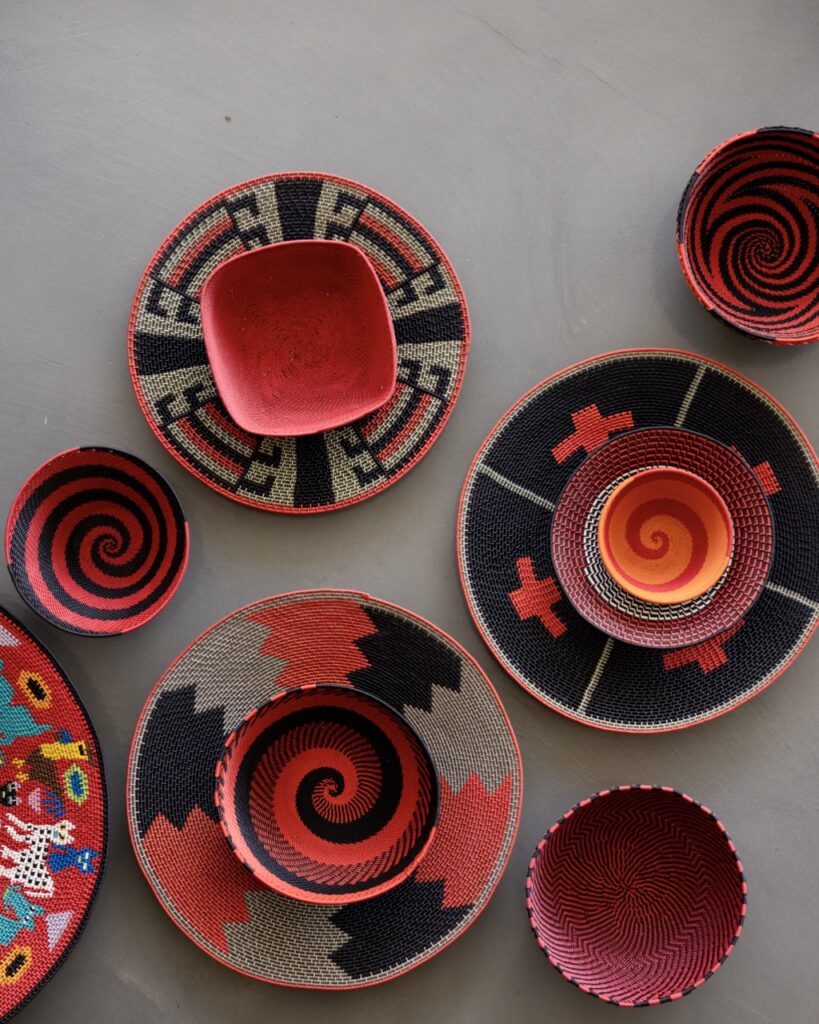
A Celebration of Wire Baskets and South African Cuisine
The craftspeople of South Africa have a long-held custom of embellishing utilitarian items with found materials. For instance, Zulu night watchmen who transformed traditional beer pot lids and other everyday objects with wire. By the 1980s these items were being sold to tourists as crafts, not identified as the creation of individuals with distinctive artistic styles. Then a few people with a passion for the artform, including one collector from Santa Fe, helped encourage a shift in the weavers’ approach. As the quality and individuality of their work developed, it began reaching an international market — and changing the lives of the artists and their families.
Art consultant David Arment was that collector. In 1991, Arment and his partner, architect Jim Rimelspach, were in Johannesburg on the first of many sojourns in Africa. They picked up a tourist brochure whose cover featured a photo of Zulu telephone wire baskets and were immediately taken with the baskets’ rich colors and the ingenuity of the weaving. Inquiring, they were told no baskets were available. Friends in South Africa, including artists’ advocate Marisa Fick-Jordaan, soon helped track down a few and Arment began what would become the largest collection of telephone wire basket art outside of Africa.
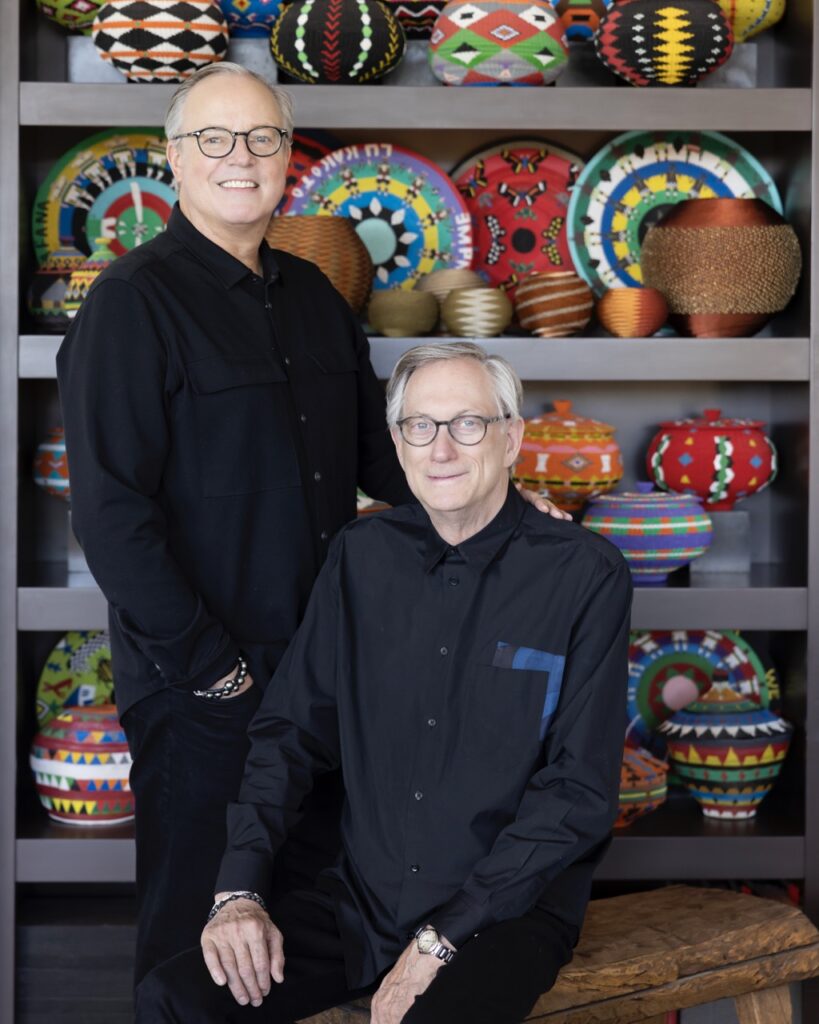
Creating an Artistic Exhibition at Home
Today, Arment’s wire artwork collection numbers about 2,000 pieces, including platters, plates, baskets, beer pot lids, vessels, and sticks. They vary in size and complexity and include geometric patterns and pictorial subject matter. Some have words woven into them. The collection’s oldest items date to the late 1800s, when copper or brass wire was crafted into beer pot lids. Some manufacturers now produce new plastic-coated wire specifically for South African weavers, in colors popular with artists.
In Arment and Rimelspach’s elegant, contemporary Santa Fe home, designed by Rimelspach and featured in the 2021 book, Santa Fe Modern, wildly colorful displays of wire basketry complement the couple’s other collections, which lean toward the monochromatic. For four decades Rimelspach has been collecting Acoma Pueblo pottery from the late 1800s to mid-1900s, along with a few contemporary pieces. Minimalist paintings by European and New Mexico artists, and black and white photography by Herb Ritts and Robert Mapplethorpe also reflect the collectors’ uncluttered aesthetic. One cleverly designed display cabinet contains portions of three distinct collections. But, its sliding doors open to reveal only one type of art at a time. Move a door and the feeling of the room changes entirely.
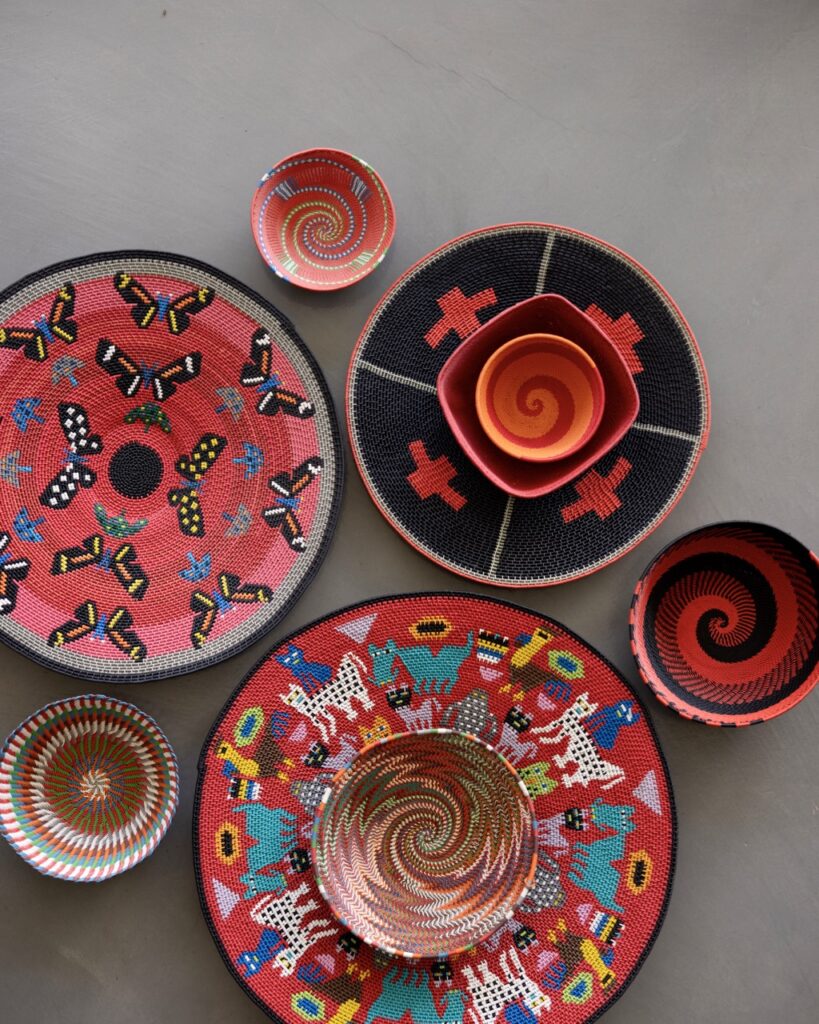
Sharing a Collection with the Whole World
While Arment and Rimelspach enjoy the art immensely, a few years ago they began contemplating its future. They decided to donate the full David Arment Southern African Collection to the Museum of International Folk Art in Santa Fe. “We want our collections to survive us,” Arment says. This year the museum will take the first quarter of the collection, with the remainder to follow. Arment smiles, recalling that in discussing the donation, museum representatives gently reminded them, “You can come visit (the baskets) any time you like.”
That initial donation is showcased in the exhibit, iNgqikithi yokuPhica/ Weaving Meaning: Telephone Wire Art from South Africa, guest-curated by art historian Dr. Elizabeth Perrill, with guidance from a committee of South African Indigenous Knowledge Experts. Running through November 17, 2025, it is the first exhibition of telephone wire weaving at a major North American museum.

Calling Back to Africa
Since their first visit to Africa more than three decades ago, Arment and Rimelspach have returned every year. They are drawn by a deep appreciation of the cultures, by bird watching and photo safaris, and to visit friends. When they met Fick-Jordaan on one of their first visits, she and Arment immediately recognized a mutual enthusiasm for wire basket art. In 2005 the two published Wired: Contemporary Zulu Telephone Wire Baskets. A newly updated edition is being released by Radius Books in Santa Fe in conjunction with the museum show. It features additional master weavers, each expressing their own artistic vision.
Rimelspach notes that even with intricate patterns, the weavers do not draw out the designs but instead use mathematics, counting from the basket’s center to create the image held in their mind. Many incorporate patterns, stories, and traditions from Zulu culture. The results, especially the joyful colors, capture “the spirit of Africa that is so vibrant and exuberant,” Arment says. “It’s the kind of thing that just makes you smile when you see it.”

How Art Brings People Together
There is something seductively tactile about David Arment’s collection of wire baskets. They invite you to pick them up, admire them, and marvel at the seemingly effortless symmetry and brilliant color combinations. So what better way to celebrate the donation of Arment’s collection to the Museum of International Folk Art, than with a dinner party where the stars of the show were pieces from his own collection?
Black and white was the theme of the night. But splashes of color done the space, thanks to artfully arranged vases of protea – a flower native to South Africa. A Graham Beck Brut Methode Cap Classique – bubbly from South Africa that is a favorite of hosts Jim and David – welcomes guests.
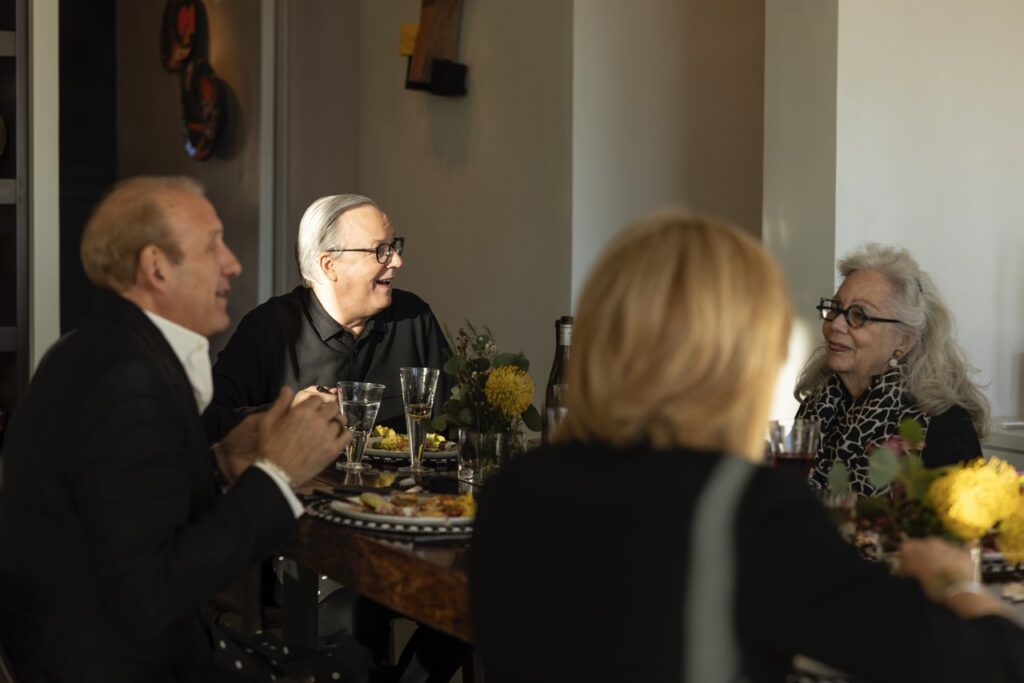
Food was an homage to the rich culinary traditions of South Africa and prepared to perfection by Compound Executive Chef Weston Ludeke, including a rich jumbo prawn curry, and a riff on a “bobotie” – the quintessential South African casserole. Chef Nicole Appels dazzled with two desserts – both favorites of David. Guests bite into Malva Pudding (think sticky toffee pudding on overdrive) and a moreish peppermint crisp tart.
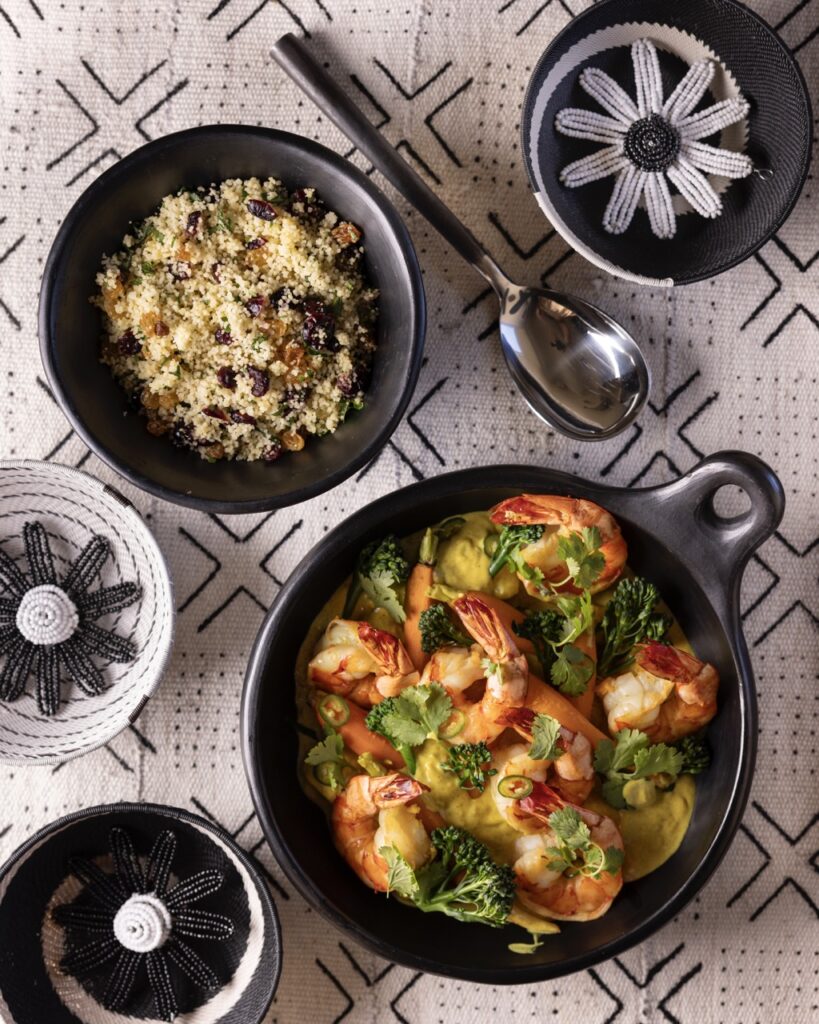
 Saffron Couscous with Dried Fruits, Mint, and Parsley and Jumbo Prawn Curry with Potato Gnocchi and Carrots
Saffron Couscous with Dried Fruits, Mint, and Parsley and Jumbo Prawn Curry with Potato Gnocchi and CarrotsGlasses were raised to celebrate the hosts, the guests, the food, and most of all the wire baskets’ new home.
A South African Menu
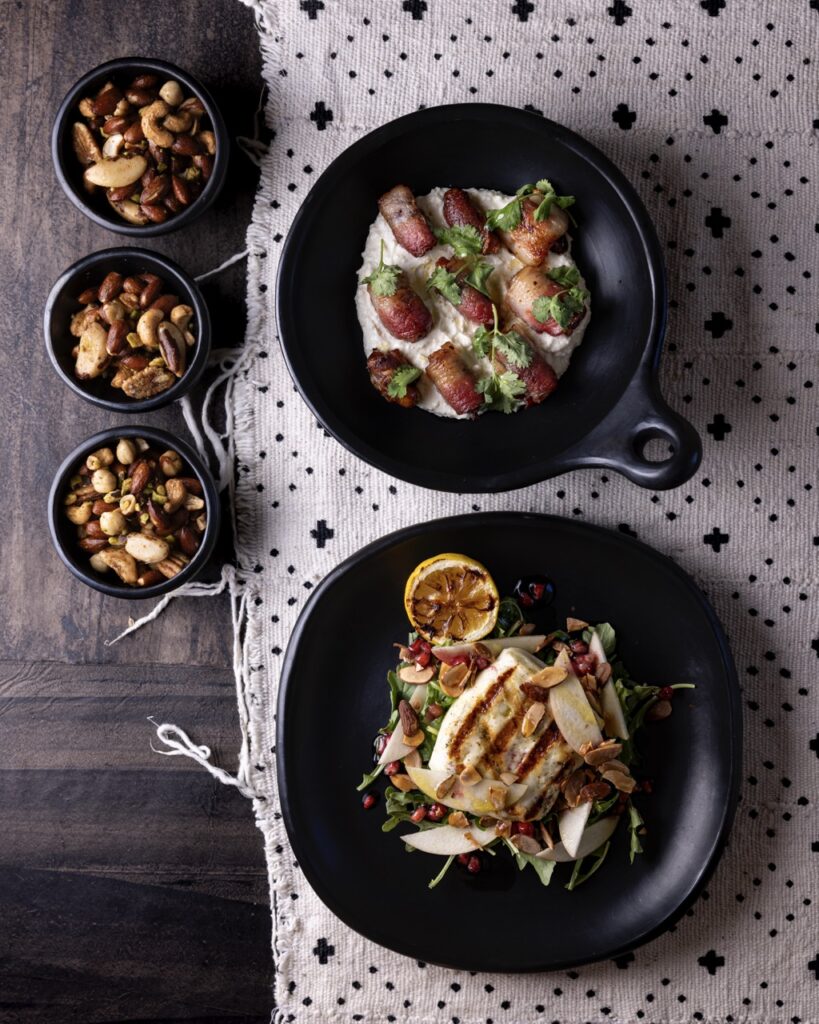
Appetizers
Grilled Halloumi Cheese Over a Bed of Greens, with Pomegranate, Almonds, and Apples
Bacon-Wrapped Dates with Whipped Feta Cheese and Cilantro
Curried Chicken Skewers with Caper Raisin Puree
Savory Spiced Nuts

Dinner
“Bobotie” Minced Meat Pate, Omelette, Frisee
Jumbo Prawn Curry with Potato Gnocchi and Carrots
Saffron Couscous with Dried Fruits, Mint, and Parsley
Kachumbari Salad with Tomato, Cucumber, Red Onion, and Mint
Butternut Squash and Coconut Soup with Fried Leeks, Croutons, and Roasted Butternut Squash
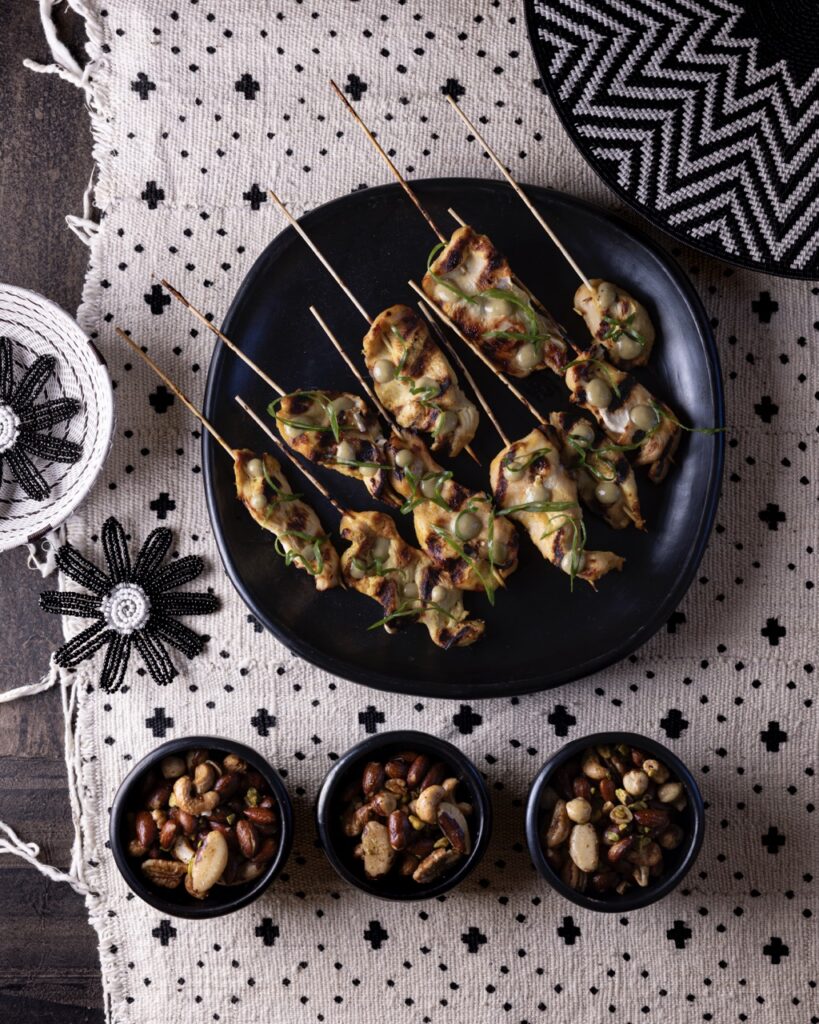
Dessert
Malva Pudding with Crème Anglaise
Peppermint Crisp Tart
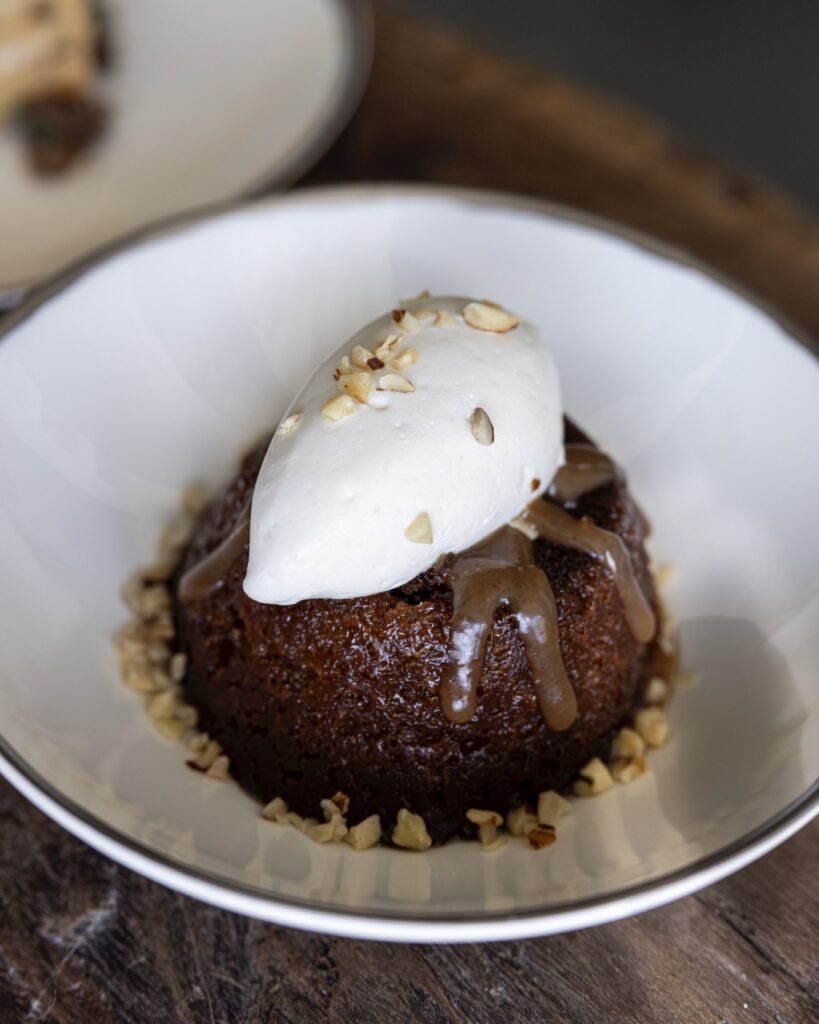
Drinks
Graham Beck Brut Methode Cap Classique
Raat Original Chenin Blanc 2021
Craven Wines Cinsault 2022
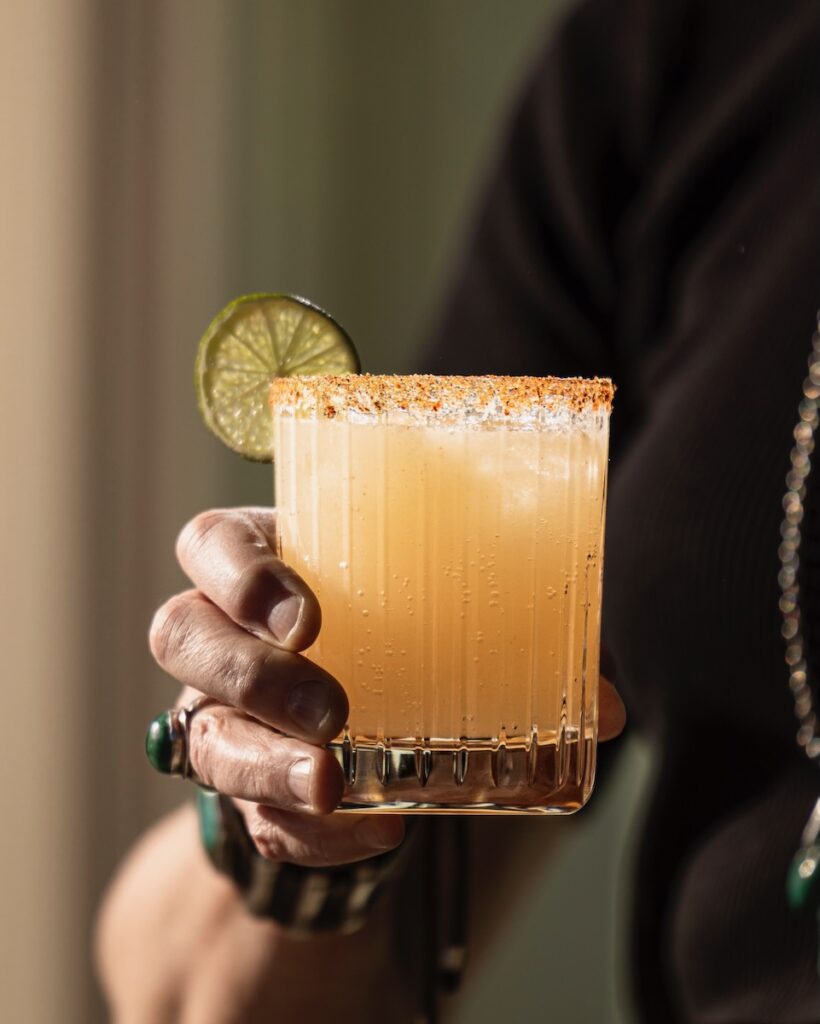
Special thanks to Weston Ludeke, Executive Chef at the Compound, Mark Kiffin, chef/owner of the Compound, and Barb Kiffin, Financial Director and Marketing Director at the Compound for making such a beautiful meal possible. And to Chef Nicole Appel for the sparkle and sweetness of her luscious desserts.
Story by Gussie Fauntleroy
Photography by Tira Howard
Styling by Keith Recker
Food by Chef Weston Ludeke, The Compound
Desserts by Chef Nicole Appel
Subscribe to TABLE Magazine‘s print edition.
